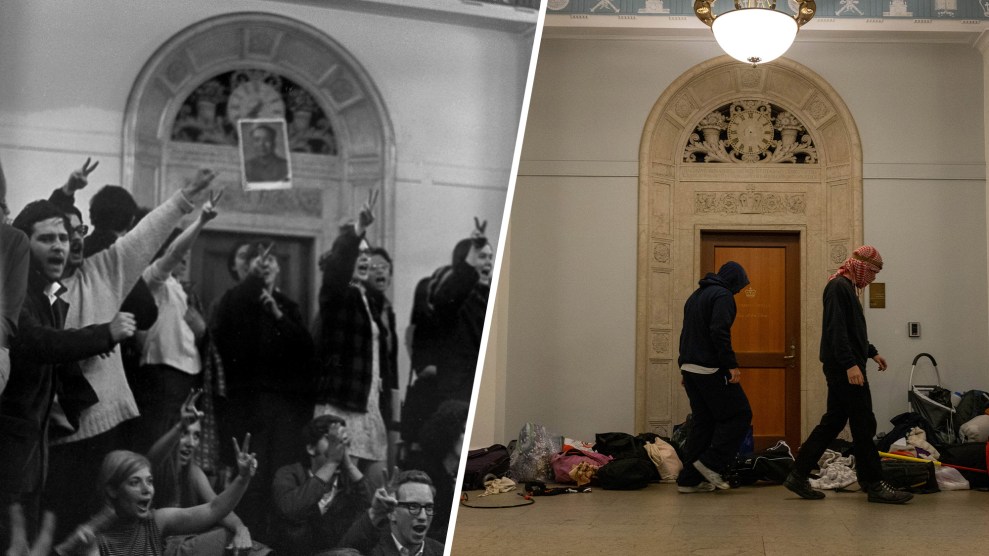In the four-bedroom Brooklyn apartment Maria Motta shared with her three sons, her mother, her cousin, and a lodger, there was no place to sit. In fact, there was no furniture at all, aside from two double beds for the boys and a couple of inflatable mattresses for the adults. Since migrating from Mexico to New York City in 1980, Motta worked alongside her mother cleaning houses, but at the end of the month she rarely had the hundreds of dollars she’d need to buy her own sofa.
Then in the fall of 2001, Motta discovered Rent-A-Center. Situated in mostly poor neighborhoods, this chain’s 2,600 stores offer big-ticket items like furniture and electronics to millions of people with no credit. Hiking up prices and charging exorbitant interest, using a scheme critics have called “pay now, pay later,” the company racks up sales in the billions and is a key player in what one market research firm calls “the poverty market.”
Here was the deal: For $600, Motta would buy a matching armchair and love seat, to be paid for over three months. Never mind that the contract she saw quoted the cash price as $1,350 and the price for paying by installment as $2,700. Those numbers wouldn’t apply to her, said the salesperson, since she was buying, not renting. She paid $300 on the spot and another $300 within 60 days.
But the story didn’t end there. Monthly bills continued to arrive, late fees stacked up, and “incomplete” payments were rejected. Rent-A-Center employees routinely called her at home, says Motta, and even came by in person to pressure her to pay. After two years, Motta had paid Rent-A-Center almost $2,000. “I was giving and giving and it was never done,” she recalled. “I told them to take their sofa.” The company would not comment on her case.
Today, still hoping for a refund, Motta has joined the growing ranks of dissatisfied Rent-A-Center consumers. The company, which owns the franchises Renters Choice, Remco, Get It Now, and ColorTyme, has been the target of several recent lawsuits accusing it of preying upon cash- and credit-strapped customers with sales practices that inflate and mask the true costs of their merchandise. An investigation by the New York City Department of Consumer Affairs in 2001 found that local Rent-A-Centers’ “cash prices” were as much as 225 percent above normal retail and that some of their long-term rental charges were equivalent to a 392 percent annual interest rate. The Cherry Street Rent-A-Center on New York’s Lower East Side, located in the shadow of a vast housing project, sells a plastic toddler bed shaped like a race car for $870 under a 90-day payment plan, and nearly $1,740 under a monthly plan. An online search found a comparable bed and mattress for as little as $325. A used Whirlpool refrigerator goes for $660 on the spot or $1,319 over 66 weeks. Sears’ website advertises a brand-new one for $570.
Darnley Stewart, an attorney who is leading a New York class-action suit against the company, finds this outrageous. “Rent-A-Center explicitly targets poor, largely minority neighborhoods and has no qualms about selling a cheap television for $700 to people who can’t afford it,” she says. Stewart’s suit, which is awaiting a ruling from the state Supreme Court, alleges that Rent-A-Center engaged in deceptive and fraudulent business practices by misrepresenting the actual costs of its merchandise and coercing customers with a “high-pressure sales scheme.”
But none of the numerous lawsuits against it–settlements in six states have totaled more than $256 million–has slowed the company’s growth. Last year, the firm, based in Plano, Texas, reported $2.3 billion in sales, with profits of $183 million. In part, the business is protected by an arcane distinction between rental businesses and ordinary retailers: By claiming that their customers are simply “renting” their goods, these companies–among which Rent-A-Center is the market leader–avoid usury laws that cap the interest rates on installment plans and require businesses to disclose what they’re charging. The rent-to-own sector has managed to neuter state and federal consumer-protection laws that would treat it as just another business selling goods on credit. Where it has failed to carve out loopholes in existing laws, the industry’s lobbyists have championed new legislation that distinguishes rent-to-own businesses from other retailers.
In the 1980s, they succeeded in getting legislatures to protect them in every state except Minnesota, New Jersey, Vermont, and Wisconsin. And the fight to shelter themselves in those four states continues. According to the Public Interest Research Group (PIRG), Rent-A-Center spent nearly $4 million between 1997 and 2002 trying to roll back consumer-protection laws in the states where it was still exposed.
In February 2003, Rep. Walter Jones (R-N.C.) introduced the Consumer Rental-Purchase Agreement Act, which consumer advocates say would further shield rent-to-own businesses from having to reveal or limit their monthly charges. According to Ed Mierzwinski, PIRG’s consumer program director, the bill would invalidate the already watered-down existing state laws regulating the businesses. “Since the rent-to-own boys cannot get the last pro-consumer states to roll over and play dead, they have been asking Congress to pass a weaker federal law to override them,” he said. The bill picked up 95 cosponsors before stalling in committee last fall, and has already resurfaced in the 109th Congress. Since last May, the lobby has had the help of former Republican House leader Dick Armey, who now sits on Rent-A-Center’s board.
Some customers use Rent-A-Center as just that, a rental center. “Sometimes they want stuff for a weekend,” says a salesperson at the Cherry Street store, gesturing to rows of stereos and DVD players. “We get people who want chairs for a party or a big TV to watch a fight.” But most customers would rather own products than rent them. According to a survey by the Federal Trade Commission, 70 percent of rent-to-own customers–a market of 45 million projected consumers that boasts $6 billion in sales– eventually end up buying merchandise.
In the face of steady complaints, Rent-A-Center argues that it is offering a service to an otherwise excluded demographic, and that its mission is simply to “improve the lives of our customers.” But others, like attorney Darnley Stewart, are not even mildly persuaded: “I don’t think you are doing the poor a favor by gouging them.”















